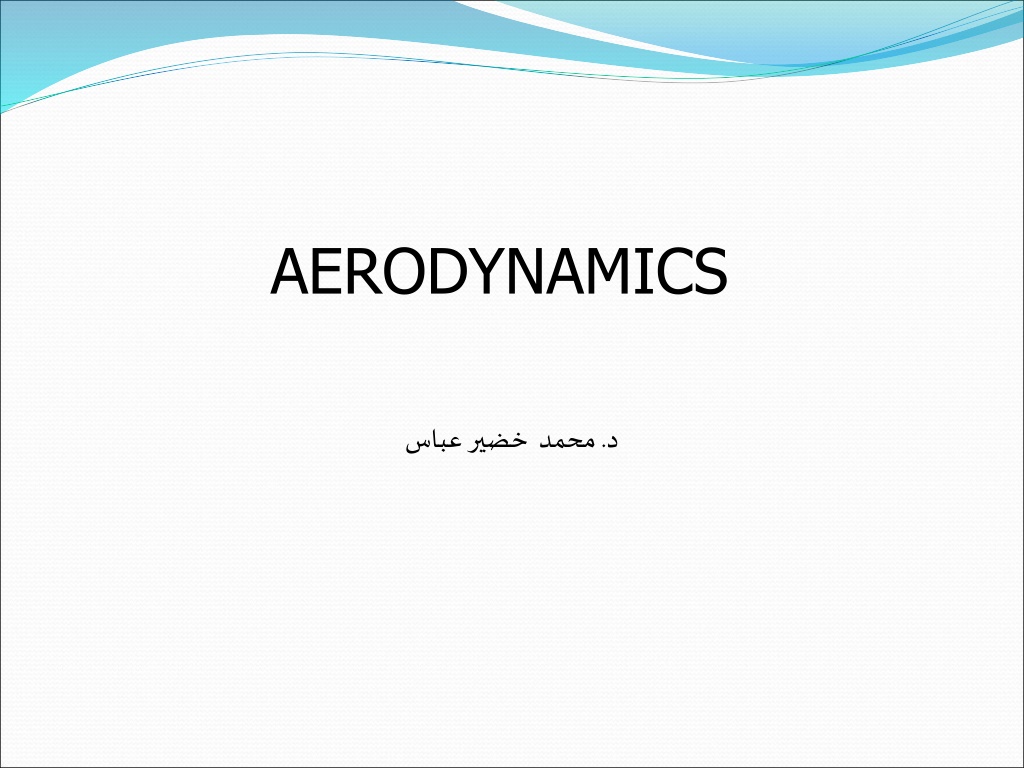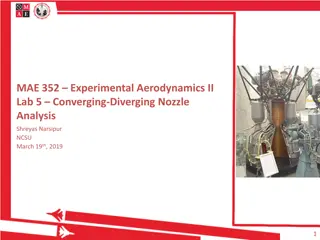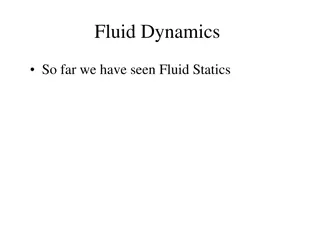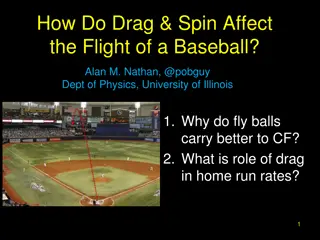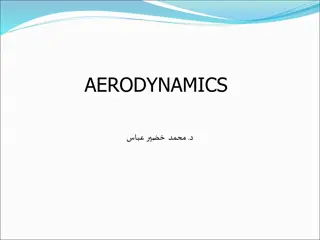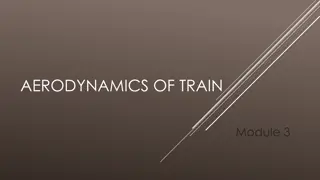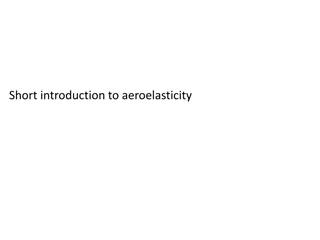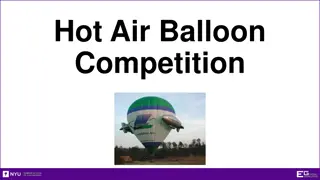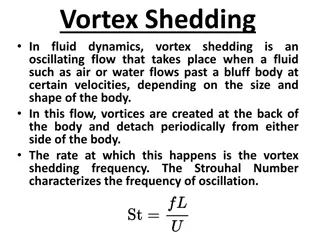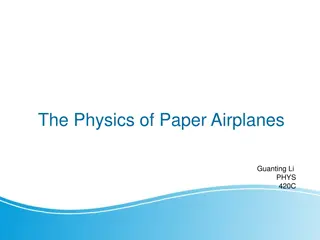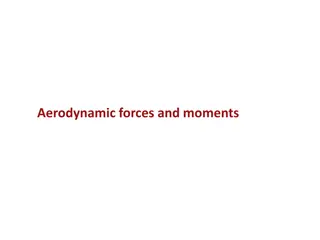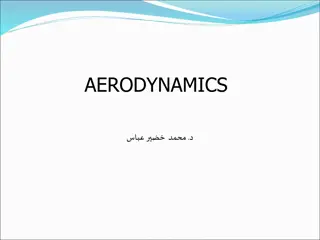Understanding Aerodynamics Fundamentals and Principles
Delve into the world of aerodynamics with an exploration of fundamental principles, equations, flow types, Mach number regimes, and vector relations. Discover the distinctions between inviscid and viscous flows, incompressible and compressible flows, as well as the various Mach number regimes from subsonic to hypersonic speeds. Gain insights into dynamically similar flows and the significance of orthogonal coordinate systems in aerodynamics.
Download Presentation

Please find below an Image/Link to download the presentation.
The content on the website is provided AS IS for your information and personal use only. It may not be sold, licensed, or shared on other websites without obtaining consent from the author. Download presentation by click this link. If you encounter any issues during the download, it is possible that the publisher has removed the file from their server.
E N D
Presentation Transcript
Contents Aerodynamics: Some Introductory Thoughts Aerodynamics: Some Fundamental Principles and Equations Fundamentals of Inviscid, Incompressible Flow Incompressible Flows Over Airfoils Incompressible Flows Over Finite Wings 1. 2. 3. 4. 5.
Flow similarity Definition of dynamically similar for two different flows The streamline patterns are geometrically similar. The distributions of V/V , p/p , etc. are the same when plotted against common non-dimensional coordinates. The force coefficients are the same. Criteria The bodies and any other solid boundaries are geometrically similar. Same similarity parameters (Re and M ).
Example , T a T Assume 4 T T T = = = 2 2 2 1 T 1 1 1 a T = = 2 2 2 a T 1 1 2 V V V = = = = M M 2 1 1 2 1 2 d a a a 2 1 1 ( 1 4 )( 2 )( 4 ) V V d = = Re 2 2 2 1 1 2 2 2 1 V d = = Similar flows Re 1 1 1 1 1
Types of flow Inviscid vs. viscous flow Inviscid: assume no friction, thermal conduction and diffusion. viscous: consider effects of friction, thermal conduction and diffusion. Incompressible vs. compressible Incompressible: density is constant. Compressible: density is variable.
Mach number regimes Subsonic flow: M<1 everywhere Transonic flow: mixed regions where M<1 and M>1 Supersonic flow: M>1 everywhere Hypersonic flow: very high supersonic speeds, usually M >5.
Chap.2 Aerodynamics: Some Fundamental Principles and Equations
OUTLINE Review of vector relations Control volumes and fluid elements Continuity equation Momentum equation Pathlines and streamlines Angular velocity, vorticity and circulation Stream function and velocity potential
Review of vector relations Vector algebra A A B B A ( B A cos B Scalar product: = e G sin ) Vector product:
Orthogonal coordinate systems Cartesian coordinate system + = + A i j k A A A x y z = + + B i j k B B B B x = y z + + A A B A B A B x x y y z z i j k = A B A A A x y z B B B x y z
Cylindrical coordinate system = + + A e e e A A A r r z z = + + B e e e B B B B r = r z z + e + A A e B A B A B r r z z e r z = A B A A A r z B B B r z
Spherical coordinate system = A r r e B + + A e e e A A = + + e e B B B B r r = + + A A B A B A B r r e e e r = A B A A A r B B B r
Gradient of a scalar field Definition of gradient of a scalar p Its magnitude is the maximum rate of changeof p per unit length. Its direction is the maximum rate of changeof p. Isoline: a line of constant p values Gradient line: a line along which p is tangent at every point. dp = n p Directional derivative: where n is the unit vector in the s direction. ds
Expression for p in Cartesian coordinate system p y x p p = + + i j k p z
Divergence of a vector field If V is the velocity of a flow, the divergence of V will be the time rate of volume change per unit volume. Expression for divergence of V, V, in Cartesian coordinate system = + + V i j k V V V x y z V V V y = + + V x z x y z
Curl of a vector field The angular velocity of a fluid element translating along a streamline is equal to one-half of the curl of V, denoted by V. Expression for curl of V in Cartesian coordinate system V V V + + = k j i V x y z i j k = V x y z V V V x y z
Relations between line, surface and volume integrals Stokes theorem c s = ( A ds A) dS Divergence theorem s V = ( A dS A) dV Gradient theorem s V = pdS pdV
